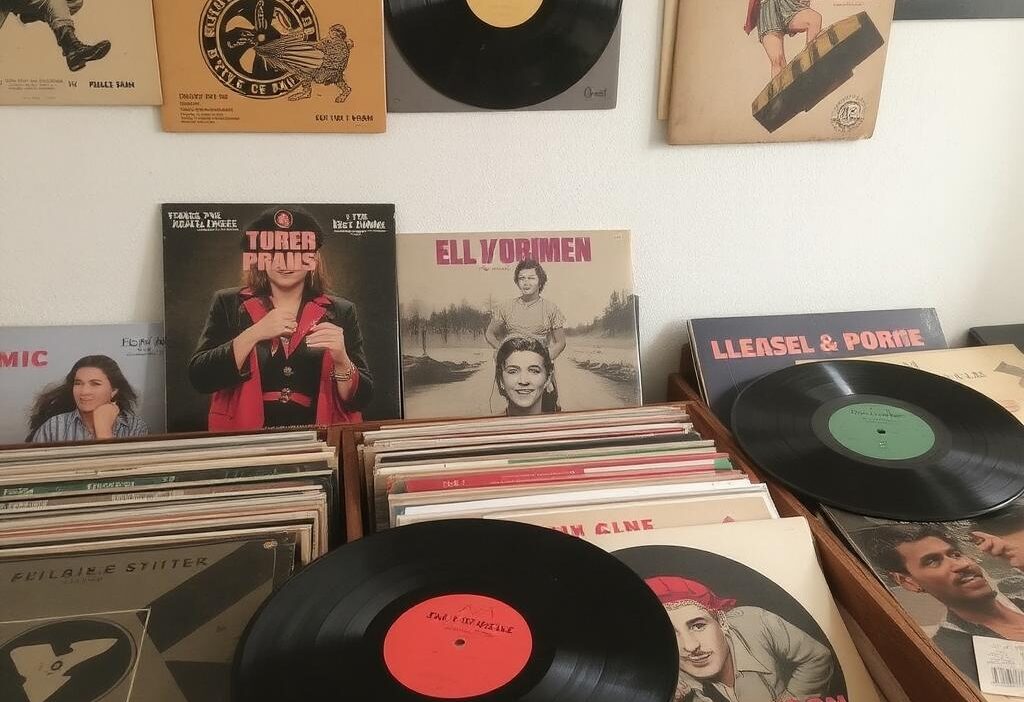The music industry has been shaped by countless recordings, but a select few rare vinyl releases have altered the course of musical history. These elusive records—whether groundbreaking test pressings, controversial banned releases, or limited editions that launched entire genres—demonstrate how physical recordings can become cultural turning points.

The Rare Vinyl That Started a Revolution
Robert Johnson – “Terraplane Blues” (1936 Vocalion 78)
- The Record: One of only three known original pressings
- Historical Impact: Introduced blues to white audiences, inspiring rock and roll
- Rarity Factor: Most copies destroyed as “race records”
- Current Value: $50,000+ for playable copies
- Legacy: Directly influenced Eric Clapton, Keith Richards, and generations of musicians
The Banned Record That Broke Barriers
The Beatles – “Butcher Cover” (1966 Capitol Promo)
- The Record: Original “Yesterday and Today” album with controversial artwork
- Historical Impact: Forced record labels to reconsider censorship
- Rarity Factor: Most copies were recalled and destroyed
- Current Value: $25,000-$40,000 for unpeeled copies
- Legacy: Paved the way for artistic freedom in album packaging
The Test Pressing That Created a Genre
Afrika Bambaataa – “Planet Rock” (1982 Tommy Boy White Label)
- The Record: Original test pressing of the electro-funk classic
- Historical Impact: Launched hip-hop’s electronic era
- Rarity Factor: Only 12 copies exist
- Current Value: $15,000+
- Legacy: Sampled by over 1,000 artists across multiple genres
Why These Records Matter Beyond Collectibility
These rare vinyl pressings represent more than just valuable collectibles—they are physical artifacts of musical evolution:
1. Technological Innovation
- Early stereo test pressings demonstrated new recording techniques
- Limited-run acetates captured creative processes
2. Cultural Shifts
- Banned records challenged societal norms
- Underground pressings spread revolutionary ideas
3. Genre Creation
- Rare DJ copies introduced new sounds to clubs
- Regional pressings spread local scenes globally
How to Identify Historically Significant Vinyl
Spotting records with historical importance requires attention to:
1. Catalog Numbers
- Low serial numbers often indicate early pressings
- Special prefixes denote promotional copies
2. Physical Anomalies
- Handwritten studio notations
- Unusual label designs
3. Provenance
- Former ownership by industry figures
- Documentation of historical use
Where Music History Resides Today
Key locations for historically significant vinyl:
1. Institutional Archives
- Smithsonian Institution
- Rock and Roll Hall of Fame
2. Private Collections
- Artist estates
- Music producer archives
3. Unexpected Places
- Radio station basements
- Old recording studio storage
The Ongoing Impact of Rare Vinyl
Today’s limited editions and test pressings may become tomorrow’s historical artifacts as:
- Physical media gains nostalgic value
- Digital age makes analog recordings rarer
- New genres continue to emerge from underground
For collectors and music historians alike, these rare vinyl records serve as permanent reminders that musical revolutions often begin with small press runs and bold ideas pressed into vinyl.
| Bollywood Vinyls | Popular |
| Rare Vinyl | Popular |
| Punjabi Vinyl Records | Popular |
| English Vinyl Records | Popular |
Expanding the Impact: Cultural Artifacts & Future Legacy
Beyond their immediate shock value or sonic innovation, these rare records function as tangible cultural DNA. Robert Johnson’s scratchy 78 didn’t just influence musicians; it became a Rosetta Stone for American roots music, offering white artists a direct, unfiltered connection to the Delta blues tradition previously marginalized as “race music.” Its scarcity underscores the systemic barriers it overcame. The Beatles’ “Butcher Cover” transcends controversy; it’s a physical relic of 1960s cultural upheaval. The frantic recall wasn’t just about bad PR – it was a major corporation panicking as youth culture violently rejected sanitized norms. Owning an unpeeled copy means holding a piece of that defiance.
The mere existence of only 12 “Planet Rock” test pressings highlights hip-hop’s underground, DIY birth. These weren’t manufactured for stores; they were tools of sonic warfare, carried by Bambaataa himself to pioneer DJs in the Bronx and beyond. Their scarcity mirrors the genre’s initial localism before global explosion. These records prove that scarcity often accompanies genuine revolution; mass production usually follows after the ground has been broken.
Today’s Potential Artifacts: Modern equivalents might include hand-painted dubplates from underground electronic scenes, extremely limited-run activist punk singles distributed at protests, or early demo acetates of genre-defining artists before major label polish. The rise of “lathe-cut” micro-editions (often under 50 copies) continues this tradition of physical rarity carrying radical ideas. As digital streaming homogenizes access, these intentionally scarce physical objects preserve the raw, unfiltered moments where music history pivoted. Their value isn’t merely monetary; they are primary sources for understanding how counter-culture becomes mainstream culture, one rare groove at a time.





